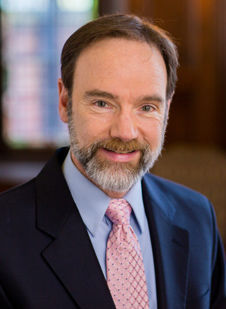[ Reprinted from Casper Star Tribune Communications ]
May 09, 2015 11:00 am •
 CHEYENNE – Some people like to say they wear many hats. Joel Feldman prefers to wear many bracelets.
CHEYENNE – Some people like to say they wear many hats. Joel Feldman prefers to wear many bracelets.
Indeed, Feldman’s arms were graced by more than two dozen bracelets when he visited students at Cheyenne’s South High on Thursday. Feldman said each bracelet was given to him by the family of a person killed by a distracted driver.
And Feldman can sympathize – the Philadelphia native has been traveling the country, speaking out against distracted driving ever since his daughter, Casey, was killed by such a driver in July 2009.
“I used to drive distracted; I drove distracted all the time,” Feldman told a health class at South. “It’s only because my daughter was killed that I changed my driving practices.”
Feldman, who has since launched the End Distracted Driving campaign, said his goal now is to get others to change their behaviors before tragedy strikes, not after. To that end, he has worked with the Children’s Hospital of Philadelphia to develop a scientifically based presentation on distracted driving, which he has shared with more than 25,000 teens in 45 states.
Like so many others, Feldman said his daughter’s life ended because of someone else’s momentary lapse in concentration. In her case, she was walking across the street on her way to a summer job in New Jersey when a 58-year-old man struck her.
“The man was reaching for his GPS, and as he was reaching, he took his eyes off the road and ran a stop sign,” Feldman said. “I used to say it was an accident, but now I say it was a crash, because an accident is something you can’t prevent.”
Feldman said those lapses in attention happen for thousands of drivers every day. But that doesn’t mean they have to, and it’s important for both drivers and their passengers to recognize the dangers of distracted driving.
“Casey and her little brother were the most important people in the world to me, yet I drove distracted with them in the car,” Feldman said. “Does that make sense? It doesn’t make sense to me, not anymore.”
He asked the students to give some examples of distracted driving in their own lives or those of their family. Many acknowledged friends or parents who drive while texting or putting on makeup or wrangling with cigarettes.
Feldman suggested that the students take time to remind their drivers of the dangers of distracted driving, but he argued that passengers should try to use finesse when doing so. He said nobody likes to be told what to do. But if it’s clear the suggestion is coming from a position of caring rather than criticism, the driver may be more likely to comply.
“Just say what it is; just acknowledge it,” Feldman said. “Say, ‘You’re taking your eyes off the road when you look at your cellphone, and it’s making me a little nervous.’ Drivers appreciate it when they think their passenger cares about them. Many drivers will be relieved.”
He said that just like the well-known adage “friends don’t let friends drive drunk,” people also need to make sure they, their friends and loved ones don’t drive distracted, either.
South High freshman Jordan Lick was among the students to listen to Feldman’s presentation. She said that although she knew about the dangers of distracted driving before, Feldman’s personal experience put it into stark relief.
“This’ll definitely change (my behaviors) a lot,” she said. “I was already planning on having my phone in the back seat when I drive, but I was planning on doing a lot of things when I’m driving. But all of that has changed; it’s really put things into perspective.”




